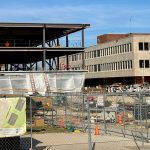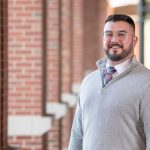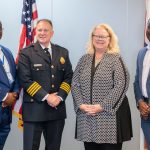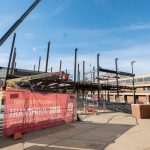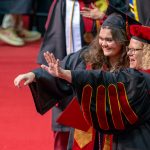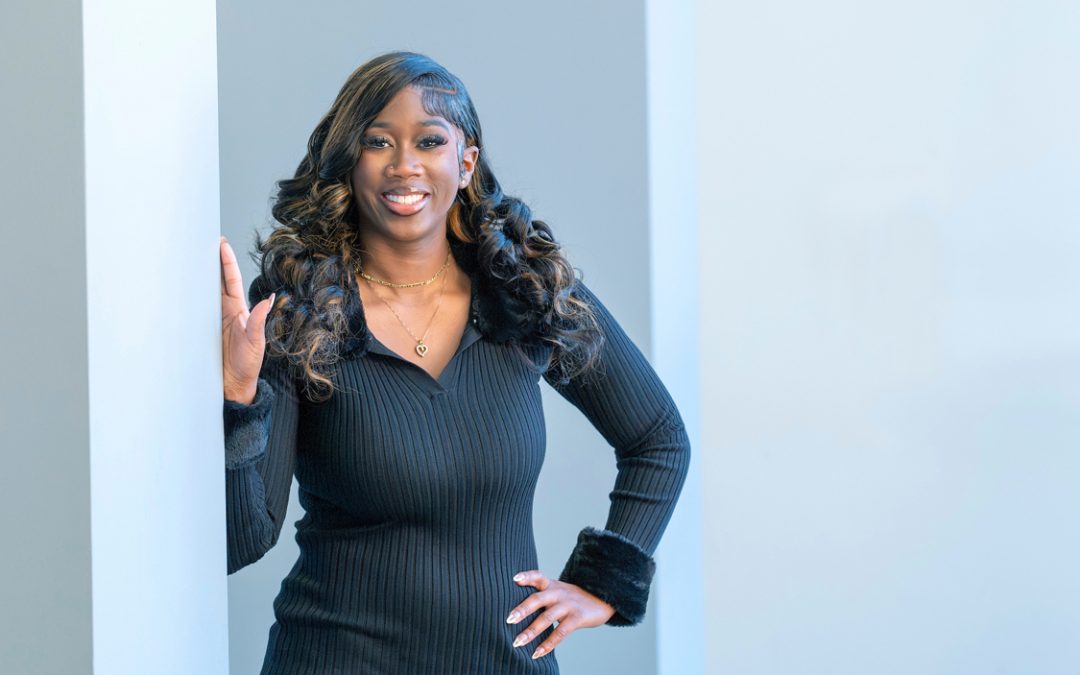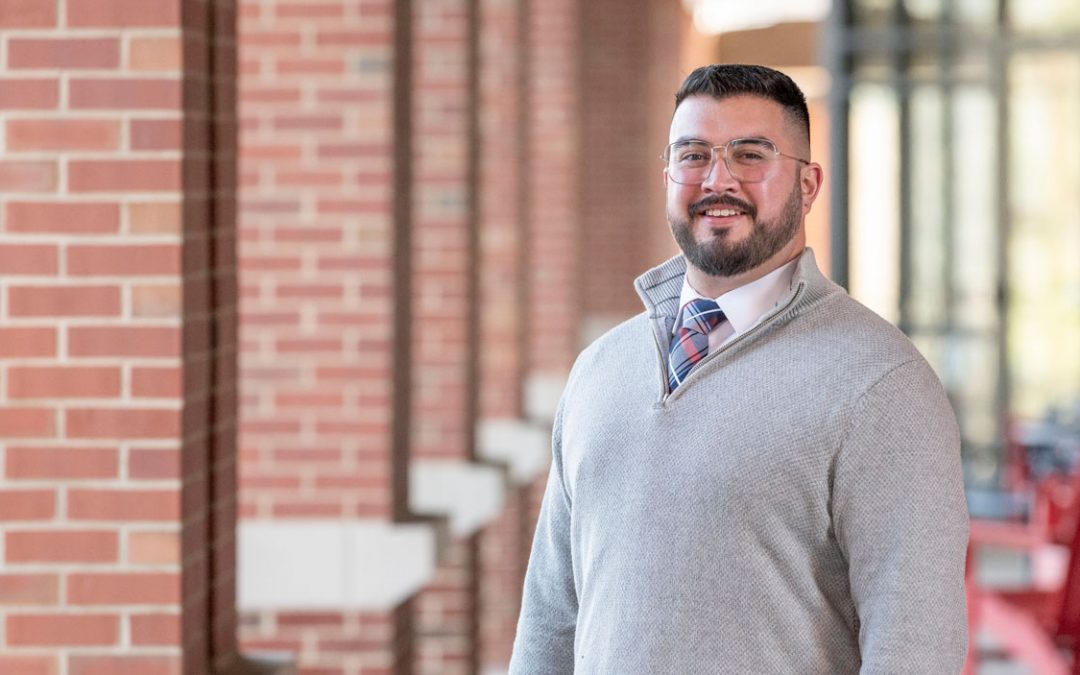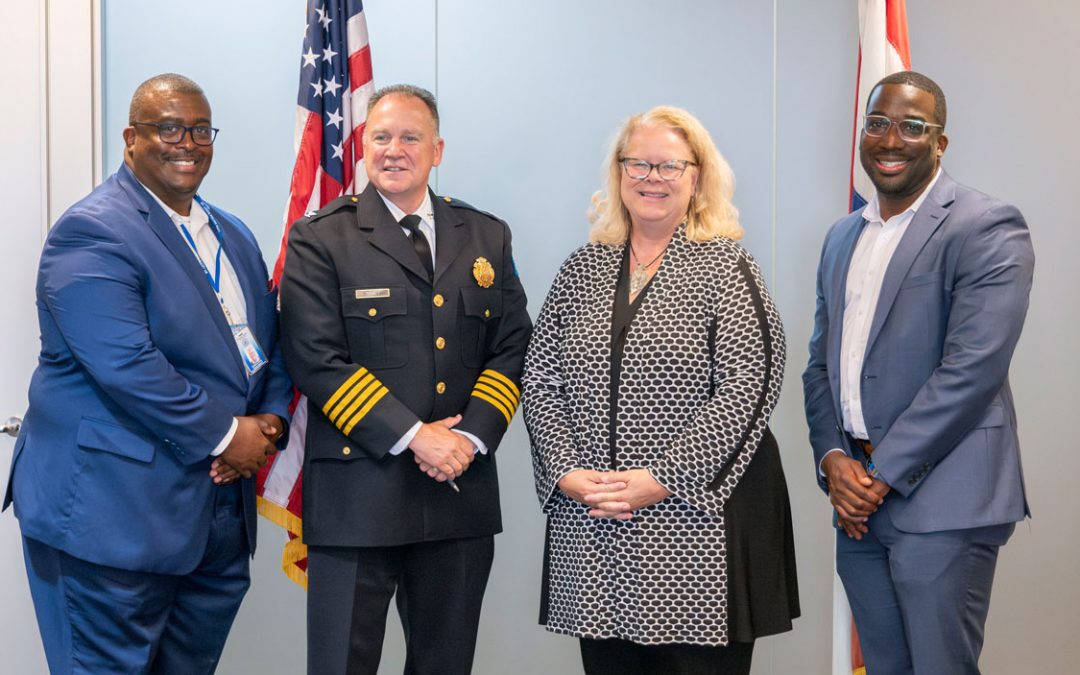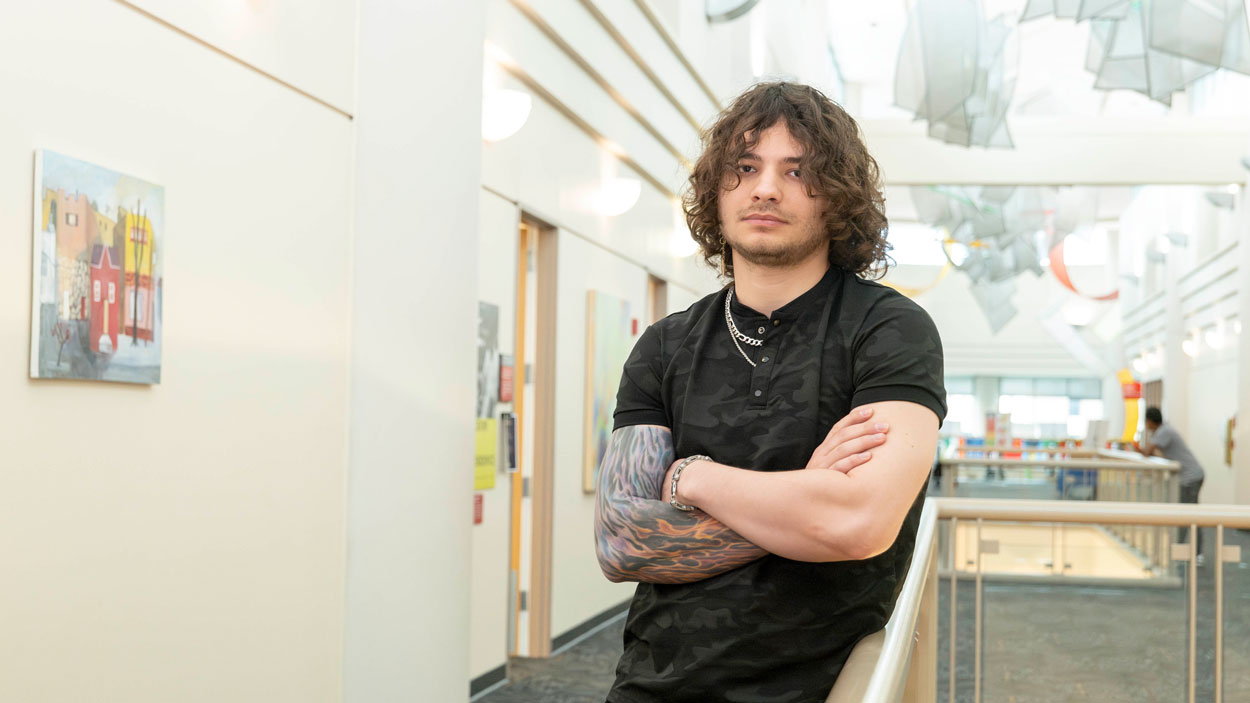
Luis Scheegans will be the first member of his immediate family to graduate from college when he completes his BS in mathematics later this summer. He will begin a doctoral program in geophysics at Stanford University this fall. (Photos by Derik Holtmann)
Luis Schneegans remembers his mother’s excitement and pride when he called home from the Emerging Researchers National Conference in STEM in March in Washington, D.C.
The soon-to-be graduate of the University of Missouri–St. Louis had just gotten the email letting him know he’d been accepted into a doctoral program in geophysics at Stanford University, and he was eager to share the news with his family.
“I could just hear her screaming on the phone,” Schneegans said of his mother. “It was even funnier because she was with my youngest sister, who’s 9 years old. She doesn’t even understand the magnitude of any of this that I’m doing. But she just knew it was a big deal for me. She ran around the house.”
Schneegans felt a strong desire to be around and to set an example for all three of his younger siblings when he became the first member of his immediate family to pursue higher education. That was a big reason he decided to enroll at UMSL in the fall of 2019, though he had many options after graduating from Parkway North High School as part of the National Hispanic Recognition Program.
“They were they were like 4, 7 and 13 at the time when I was making a decision for college,” Schneegans said of his younger sisters and younger brother. “I don’t think a 4-year-old can remember their older brother very often if he’s only coming to visit during holidays.”
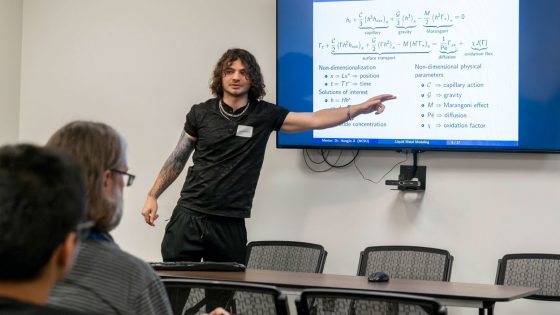
Luis Schneegans presents some of his research on “Mathematical Modeling of EGaIn Droplets Sliding Down an Inclined Plane,” during UMSL’s Undergraduate Research Symposium in late April.
By living at home, they got to observe the work it took to finish his degree. With the completion of one elective course later this summer, Schneegans will have earned his Bachelor of Science in mathematics with a minor in philosophy.
“They don’t have to follow in my footsteps at all,” said Schneegans, who participated in a May 11 commencement ceremony for graduates of the College of Arts and Sciences. “They’re not me, and I’m not them. I can’t make them do anything. In the end, if I can just have them acknowledge that it’s possible, that’s fine by me because I didn’t even know this was a possible route in the first place.”
He relied on his own mentors to help him navigate his path to college, through his course work, into opportunities taking part in undergraduate research and through the process of applying to graduate school, all with the encouragement of his parents. But it wasn’t always easy.
Schneegans was helped financially by receiving the Curators Scholarship as well as the Margaret Bush Wilson, Eugene Meehan, Purdy Emerging Leaders and Mathematical Sciences Alumni scholarships and a Bright Flight Scholarship during his time at UMSL. But he had to overcome other challenges along the way to earn his degree.
“It started off pretty rough,” Schneegans said. “My freshman year, I had a go on a break my first semester for two months. It was a mental health break. I feel like every college student goes through. Sometimes personal life and school life jumbles up into one and becomes too difficult. For me, it just so happened to be in my first year when it happened.”
It set back his academic progress and led him to complete 27 hours of course work in the spring semester – the previous fall’s slate of classes plus new ones – as he tried to catch up.
The COVID-19 pandemic hit during that semester, adding another challenge as all his classes shifted online.
“If I didn’t learn how to time manage through that, I don’t know where I would learn time management in the future,” Schneegans said.
He intended to major in physics, but he wound up changing plans to pursue philosophy and later switched his major to mathematics. It better fit his interest in finding solutions to real-world problems, though he credits his study of philosophy in helping him learn to think logically and more critically.
“Luis was a very motivated and hard-working student,” said Associate Teaching Professor David Covert, the undergraduate mathematics director in the Department of Mathematics, Physics, Astronomy and Statistics. “He was not deterred by any setbacks, and he tended to learn from his mistakes. He was very responsive to feedback.”
Schneegans also was intentional about finding learning opportunities outside the classroom, first getting involved in the Missouri Louis Stokes Alliance for Minority Participation, or MOLSAMP, an alliance of nine institutions of higher education in Missouri that have collaborated to try to increase the number of underrepresented minority students statewide completing undergraduate and advanced degrees in STEM fields.
He learned of the program through a friend who received an invitation as a biology major. Though he was then undeclared, he reached out to Professor E. Paulette Isaac-Savage, a co-PI on the project, to see if he could participate and was approved.
The program is funded through a grant from the National Science Foundation. Participating students attend monthly meetings and receive a stipend each semester provided they maintain a minimum GPA and meet other requirements for involvement.
By taking part in MOLSAMP, Schneegans discovered how to pursue NSF-supported Research Experiences for Undergraduates or REUs. That proved invaluable to his own educational experience, and he was quick to share that with others.
“Luis is passionate about learning, which shines through in his coursework and research projects,” said Jamillah Boyd, an associate teaching professor of information systems and technology and the faculty advisor for the MOLSAMP program at UMSL. “He is always open to sharing what he learns in the classroom, at conferences, and at his summer research experiences. He uses his experiences to mentor others, which makes him an invaluable asset to our community.”
Schneegans participated in three REUs during his time at UMSL, spending summers gaining research experience at the University of Missouri–Columbia, Kansas State University and North Carolina State University.
“I was very impressed by his pursual of REUs,” Covert said. “They are one of the best tools students can use to determine what graduate research will be like.”
In the first, he learned about nonlinear dynamics and chaos theory. In the second, he researched a partial differential equation and helped model it for multiple dimensions. In his most recent internship, he worked on a mathematical physics project focused on model liquid metal dynamics for Eutectic gallium-indium, or EGaIn, a liquid metal alloy that’s a combination of gallium and indium.
By the end of his second REU, at Kansas State, he decided he wanted to go to graduate school to pursue a PhD, eventually deciding to focus on geophysics.
“It just so happened that I fell in love with research,” he said. “I fell in love with it due to the struggles of research, rather than the easiness of research.”
He relayed the experience of writing a paper highlighting his findings from a summer spent gathering and analyzing data. He estimated it was about 20 pages long, but because of a critical error made defining terms, about half those pages had to be deleted. He worked with his mentor for several hours trying his best to salvage what he could from the work.
“I didn’t realize I was going to become so passionate about the research,” Schneegans said.
He had multiple chances to present last summer’s work on “Mathematical Modeling of EGaIn Droplets Sliding Down an Inclined Plane,” taking part in the Emerging Researchers National Conference and UMSL’s Undergraduate Research Symposium.
Schneegans, who was also active in Math Club throughout his time at UMSL and served as an iMentor in the to freshmen, sophomores and transfer students adjusting to the university, would like to continue doing similar research work as he pursues his doctorate. He’s still deciding where that might lead him in the future.
“I’m leaning more towards the industry-research track,” he said, rather than a position in academia. “Specifically, I would like to work at a national lab. There’s a few national labs and private labs that are specifically lined up with what I want to do – Livermore National Lab, Santa Fe Institute. But I don’t want to limit my options.”
He has time to figure it out, of course, but he’s continuing to show those around him – and himself – just what is possible.



